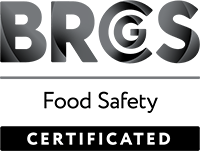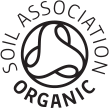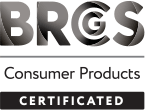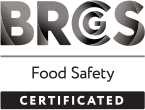When formulating for new personal care products or looking to expand a range to meet rapidly evolving consumer demands, the nutritional profile of ingredients is front and centre in considerations. After all, consumers are getting more connected and proactive with their purchases. With ingredient lists, origin and consumer reviews never more than a few clicks away, it falls to product developers to respond to consumer trends directly in formulation design to capture the hearts of consumers.
Plant-based oils play a huge role in consumer-led formulation today. Popular choices include robust and stable carrier oils that provide a solid base for creams and lotions. Great examples include the ubiquitous and reliable Sunflower Oil, exotic Coconut Oil and popular Argan Oil. There is also a great collection of more concentrated essential oils, which are used to add aroma, texture or nutritional benefits and the ever-popular Tea Tree Oil and Chamomile Oil bringing fresh innovation to the personal care market.
Plant-based oils contain natural fatty acids in various compositions, which is an important consideration for product formulators. Well known examples include Oleic Acid, Linoleic Acid and Linolenic Acid, but there are many other types too.
Importantly for formulators, the fatty acids commonly used in formulations are not directly competing – Oleic is not better or worse than Linoleic Acid, they both have strengths that make them particularly useful depending on the desired application. For some products, High Oleic will be preferred, while in another, a component such as Linoleic Acid may perform better.
What is Oleic Acid?
Oleic Acid is an omega-9 monounsaturated fatty acid. The body naturally produces this chemical, but it can also be abundant in plants, nuts and seeds. It is produced in sebum, the oily and waxy substance released by the sebaceous glands, which coats and protects the skin.
The most commonly found fatty acid in the natural world, Oleic Acid is completely odourless and colourless, ensuring it won’t affect the important visual and olfactory qualities of the personal care products it is used in. Examples of oils that are rich in Oleic Acid include Olive Oil, Rapeseed Oil and Sunflower Oil.
There is an important textural difference for formulators – oils that are rich in this fatty acid tend to be thicker and more viscous, which makes them ideal for formulations aimed at tackling dry skin, or products that nourish, enrich and protect. The thicker consistency makes high-oleic oils an ideal match for low viscosity products that benefit from texture enhancement.
What are the benefits of Oleic Acid?
Functionally, Oleic Acid is used to hydrate and lock in moisture, making it particularly attractive for skin treatments such as protective creams or toners. This also makes it a great choice for hair care products that rely on its natural qualities, such as shampoos, conditioners and treatment masks.
Due to its similarity to the body’s natural oils, high oleic oils are able to help other ingredients absorb into the skin more effectively. It’s powerful moisturising qualities also make high oleic oils valuable when formulating more specific applications, such as creams and lotions for dry and cracked skin.
Notably, Oleic Acid is rich in antioxidants, which help defend against free radicals that can cause premature ageing or damage, such as sun or environmental damage that creates wrinkles and fine lines. Because of this, high oleic oils, such as Avocado Oil, Tamanu and Sea Buckthorn Oil have an important role to play in anti-ageing formulations. On a similar note, high oleic oils can be used as a cleaning agent or surfactant, which is ideal for cleanser, face and body wash applications.
There are additional benefits to Oleic Acid in the supply chain too. Oils rich in the fatty acid tend to be more stable and resistant to oxidisation, extending their shelf life and making them easier to store, handle and move around manufacturing facilities.
Why not learn more about plant-based oils that are high in Oleic Acid, and discover how its fatty acid composition can instantly boost formulation properties and the value proposition for the consumer?
Discover more with Kerfoot Group
At Kerfoot Group, we offer a diverse portfolio of oils, butters, waxes and ingredients for brands in the personal care and food industries. Every ingredient in the range benefits from Kerfoot Group’s important reputation for authenticity and provenance, alongside powerhouse logistics to ensure that ingredients are always where they need to be.
In addition, Kerfoot has the technical expertise to deliver quality and value to existing formulations and new product development alike, guiding from conception through to completion.
Looking to find out how easy it can be to harness powerful and luxurious natural oils and ingredients in your personal care manufacturing supply chain, and engage with today’s discerning consumer? Contact the Kerfoot team today!












